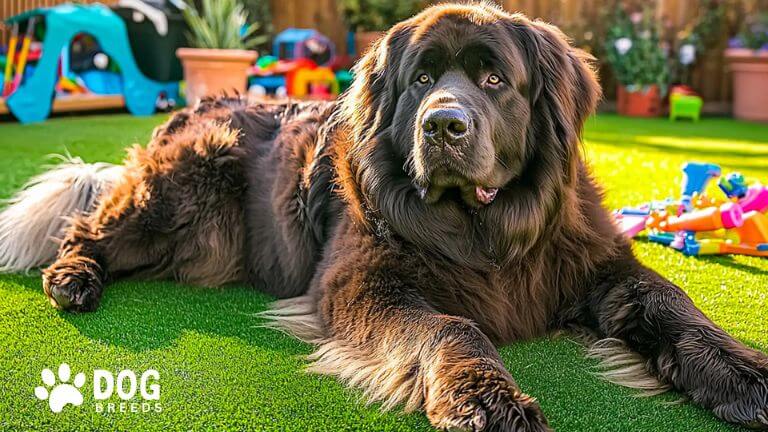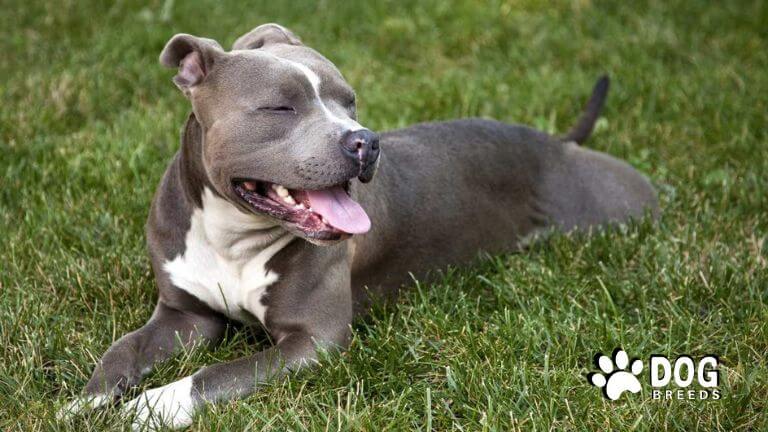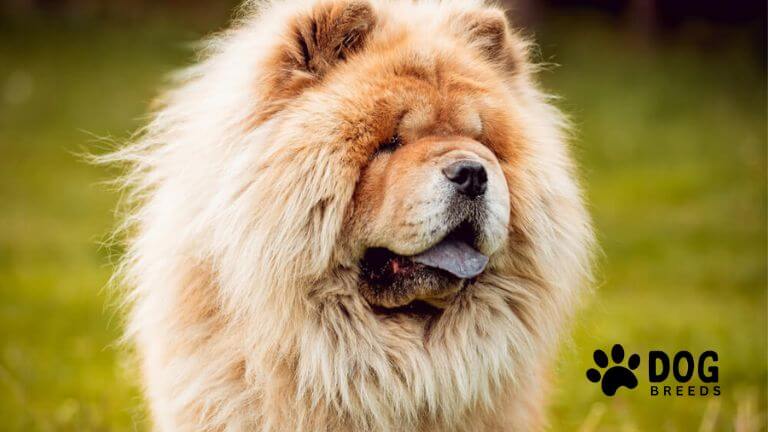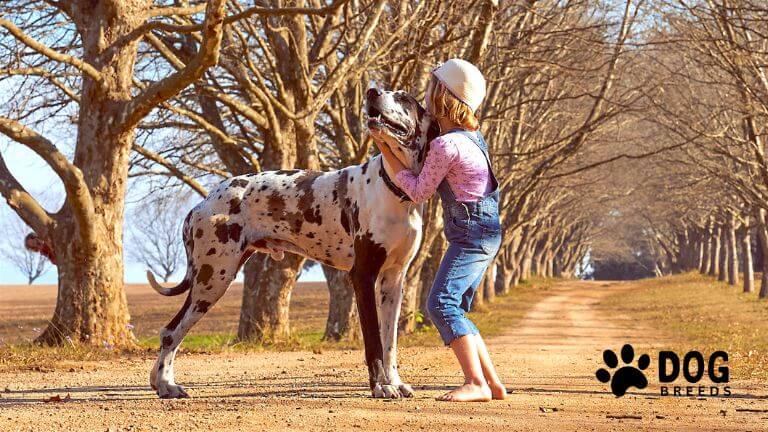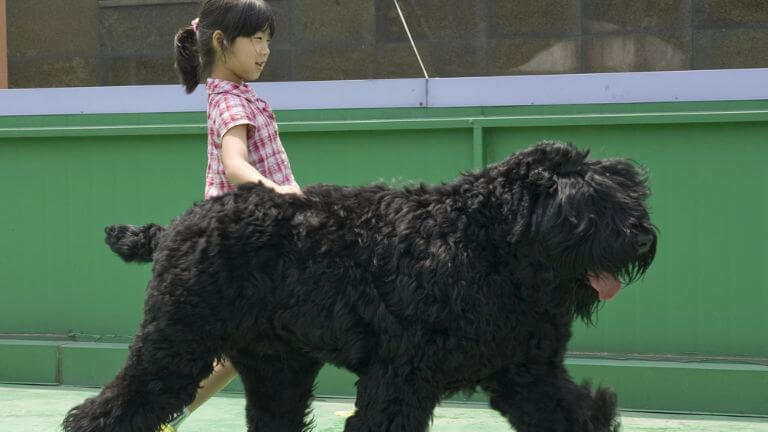Newfoundland Dog Breed: Characteristics, Care & Training
The Newfoundland dog is a gentle giant that has earned its reputation as one of the most affectionate and hardworking breeds. Originating from the island of Newfoundland in Canada, this breed was originally used for water rescues and as a working companion for fishermen. Over time, the Newfoundland has become a beloved family pet, known for its loyalty, intelligence, and incredible strength. Let’s explore everything you need to know about this noble breed.
Newfoundland Dog Breed Overview

| Breed Name | Newfoundland |
| Origin | Canada |
| Group | Working Group (AKC) |
| Size | Giant |
| Height | Males: 28 inches (71 cm); Females: 26 inches (66 cm) |
| Weight | Males: 130-150 lbs (59-68 kg); Females: 100-120 lbs (45-54 kg) |
| Coat Type | Dense, water-resistant double coat |
| Coat Colors | Black, brown, gray, or Landseer (white with black markings) |
| Lifespan | 8-10 years |
| Temperament | Gentle, loyal, patient, intelligent, and protective |
| Energy Level | Moderate; enjoys outdoor activities but also relaxed indoors |
| Trainability | High; intelligent and eager to please |
| Grooming Needs | High; regular brushing to manage shedding and maintain coat health |
| Common Health Issues | Hip dysplasia, elbow dysplasia, heart conditions, and cystinuria |
| Ideal Living Environment | Homes with ample space and access to water or outdoor activities |
| Best Suited For | Families, active individuals, and those looking for a gentle giant |
| Special Traits | Excellent swimmer and known for water rescues |
| Fun Fact | Newfoundlands have webbed feet and were historically used for water rescues. |
Physical Characteristics of the Newfoundland Dog
The Newfoundland is a large and powerful breed with a thick, water-resistant coat. Adult males typically stand between 28 inches tall at the shoulder, with females slightly smaller. These dogs weigh anywhere from 100 to 150 pounds, making them quite imposing in size. Their broad, muscular bodies are balanced by webbed feet, an essential feature of their history as water rescue dogs.
Newfoundlands have a distinctive double coat: a dense, oily undercoat and a longer, water-resistant outer coat. They come in several color variations, including black, brown, gray, and the striking Landseer (white with black markings). Their faces are marked by gentle, expressive eyes that reflect their calm and loyal temperament.
Temperament and Personality
Newfoundlands are known for their kind and gentle nature, making them excellent companions for families. They are often described as “gentle giants” due to their calm and tolerant behavior, especially around children. Despite their imposing size, they are friendly and patient, often forming strong bonds with family members.
These dogs are also incredibly intelligent and loyal, with an instinct to protect those they love. Newfoundlands typically get along well with other pets, especially when socialized early, and they are generally non-aggressive. Their playful nature, paired with their love for water, means they enjoy activities like swimming and playing outdoors, which makes them a good fit for families with active lifestyles.
Health and Lifespan
On average, a Newfoundland dog has a lifespan of 10 to 12 years. Like many large breeds, they are prone to certain health issues. Common concerns include hip dysplasia and elbow dysplasia, both of which can affect their mobility. To prevent these conditions, regular vet check-ups and maintaining a healthy weight are important.
Additionally, Newfoundlands are known to drool, which is something potential owners should be prepared for. Regular grooming and proper care can help manage shedding, as their thick coat requires consistent brushing to stay healthy and free of mats.
Training and Exercise Needs
Newfoundlands are intelligent dogs and can be trained with patience and consistency. They are eager to please, which makes them relatively easy to train, though early socialization is key to ensuring they develop well-rounded personalities. Due to their large size, obedience training is important to prevent any unwanted behaviors from developing.
In terms of exercise, Newfoundlands require moderate activity to stay healthy. Regular walks, playtime, and opportunities to swim are ideal. Their webbed feet and love for water make swimming an excellent exercise for this breed, providing both mental and physical stimulation.
Care and Grooming
Newfoundlands have a thick double coat that requires regular grooming. Brushing them at least once a week helps to manage shedding and keep their coat in top condition. During shedding seasons, daily brushing may be needed to remove excess fur. Bathing should be done as necessary, using a dog-friendly shampoo to keep their coat clean without stripping it of its natural oils.
In addition to grooming, Newfoundlands have specific dietary needs due to their large size. A balanced diet with controlled portions is crucial to prevent obesity, which can exacerbate joint issues. Consulting with a vet to ensure the dog’s diet supports its health needs is highly recommended.
Living Conditions and Suitability
While the Newfoundland dog can adapt to various living conditions, they thrive in homes with ample space. This breed is best suited for owners who have large yards or access to outdoor spaces. Newfoundlands are also relatively tolerant of cold climates due to their thick coat, but they should be kept cool during hot weather to prevent overheating.
Ideal owners for this breed are those who can provide consistent attention, training, and exercise. Families with children, active individuals, or people who enjoy outdoor activities will find Newfoundland to be an ideal companion.
Interesting Facts and Trivia
- Water Rescue Legacy: Newfoundlands have a rich history as rescue dogs. Their powerful build and webbed feet made them ideal for water rescue, and they continue to be used for similar purposes today.
- Famous Dogs: Lord Byron’s dog, Boatswain, was a Newfoundland, and the breed also inspired J.M. Barrie’s famous fictional dog, Nana, in Peter Pan.
- Drooling: One of the breed’s more famous traits is drooling. Due to their large jowls and relaxed lips, it’s common for Newfoundlands to drool, especially after drinking or eating.
Sources and Authority
This guide draws from authoritative sources such as the American Kennel Club (AKC), Britannica, and other expert websites like Hill’s Pet and DogTime, ensuring the accuracy and reliability of the information presented. These sources help establish the Newfoundland as a well-rounded breed known for its intelligence, loyalty, and unique characteristics.
Conclusion
The Newfoundland dog is a versatile and loving companion. With its rich history as a working dog and water rescue expert, this breed continues to be a favorite among families looking for a loyal, gentle, and hardworking pet. Whether you’re looking for a dog to join your active family or a pet to enjoy outdoor adventures, the Newfoundland is an excellent choice. However, due to their size and grooming needs, they do require an owner who can dedicate time and care to meet their needs.
- Why Are Dalmatians Not Popular? Uncovering the Truth Behind the Rarity of This Iconic Breed - April 16, 2025
- Top 15 Chinese Dog Breeds: Discover the Best Dogs from China - April 14, 2025
- Dalmatian Dog Breed: History, Care, Personality & Health - April 3, 2025
